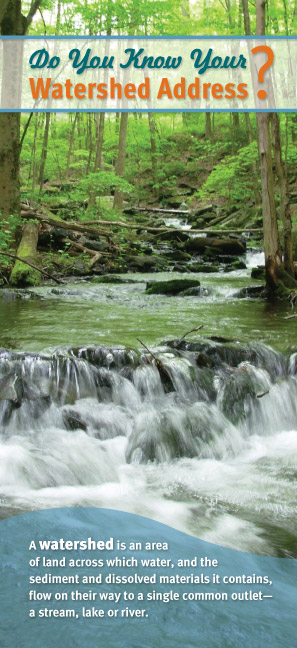Do You Know Your Watershed Address?
What is a Watershed?
A Watershed is an area of land across which water, and the sediment and dissolved materials it contains, flow on their way to a single common outlet—like a stream, lake or river.
A watershed can be compared to a basin collecting all the precipitation that falls within it and carrying this to the common outlet. Watersheds vary in size from the largest river basins to just a few acres in size.
What is your Watershed Address?
Everyone knows their mailing address and their street address but few people understand the importance of knowing their watershed address. Your watershed address provides you with a natural reference point that orients you to the region where you live.
- Where does the water that rains on your home and the surrounding landscape go?
- After it leaves your lawn, street, or driveway, where it is headed?
- Does it flow downhill straight to a nearby stream or lake?
- Does it wander into wetlands?
- Does it puddle in your backyard?
- Does it zip down a storm drain to the local creek?
- Does it penetrate the soil surface and reach groundwater below to emerge later in a nearby stream?
Whether it's a puddle, a pond, a stream, or a lake, that destination determines your watershed address. It could be Sawkill Creek, Gold Key Lake, Bushkill Creek, Lackawaxen River, Pecks Pond, or Shohola Creek. Just like there are towns, within counties within states, in a natural watershed system there are sub-watersheds within watersheds within drainage basins.
For example, the rain that falls on your driveway might flow into McConnell Pond, which flows into McConnell Creek, which flows into Shohola Creek, which flows into the Delaware River.
So your watershed address would be...
McConnell Pond, McConnell Creek, Shohola Creek, Delaware River even though your mail finds you through Hemlock Farms, Blooming Grove, PA.

Just three trees, properly placed around a house, can save up to 30% of energy use.
Plant and maintain existing trees on your property whenever possible. Trees protect your home from wind, reduce heating and cooling costs and enhance your property’s value.

